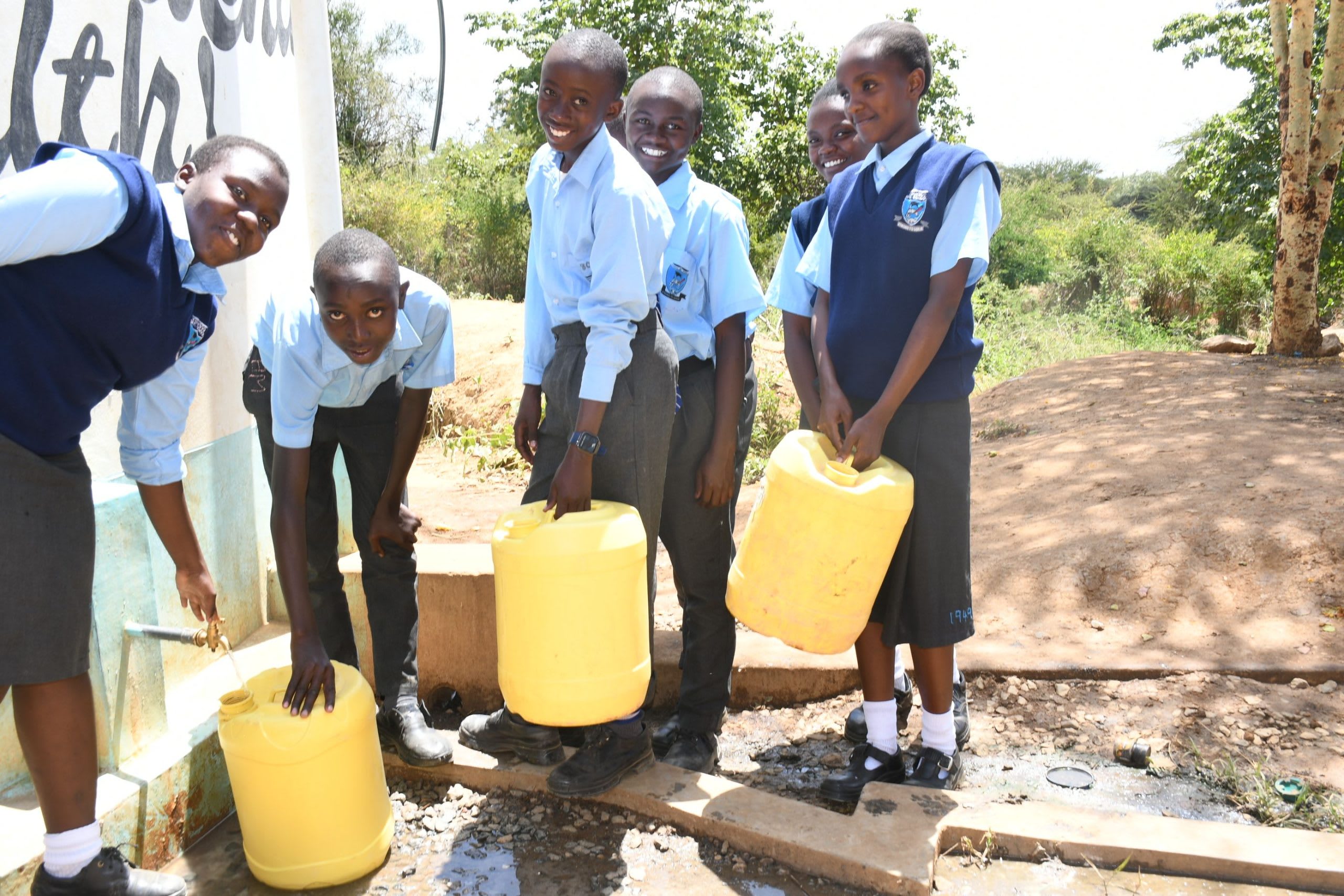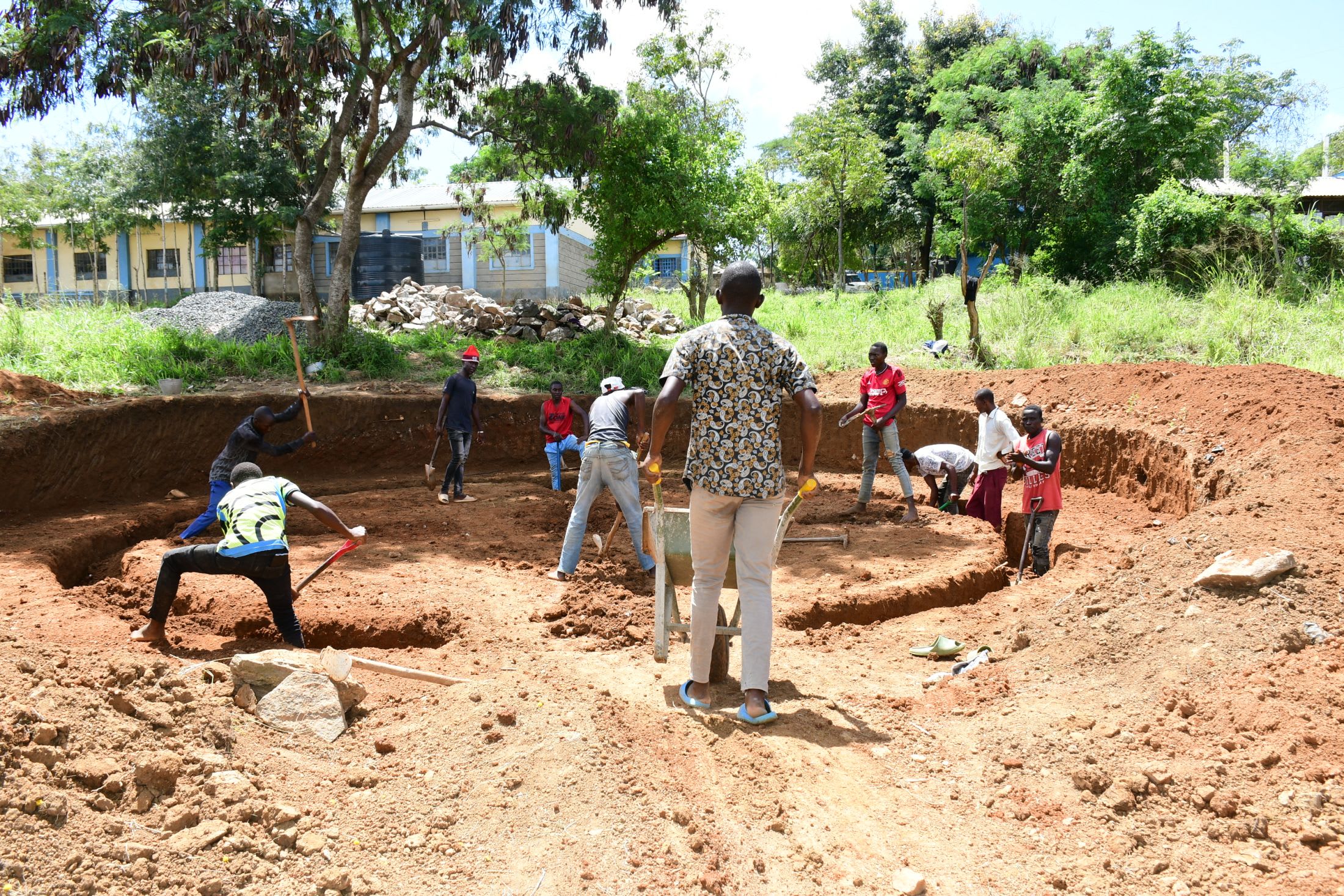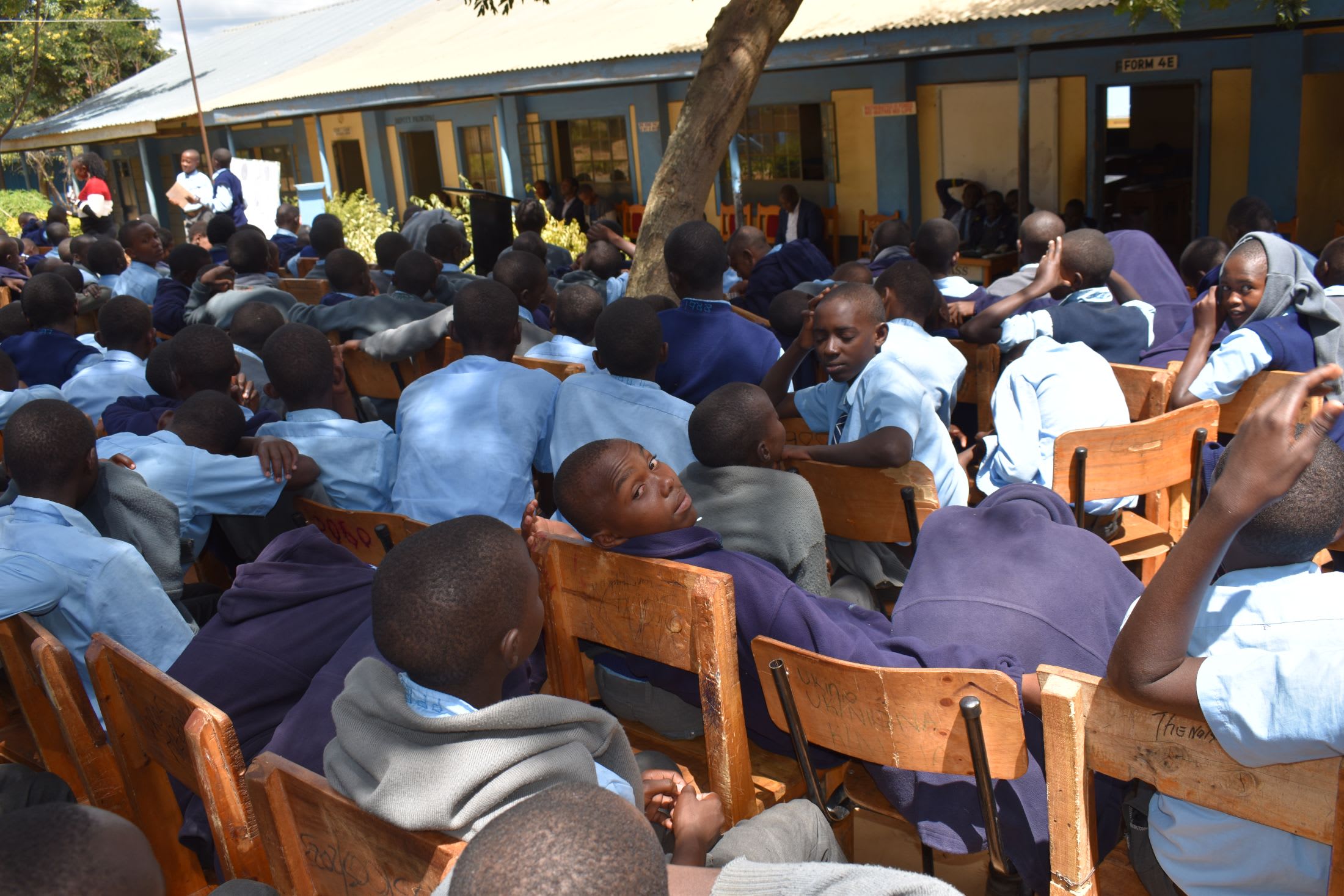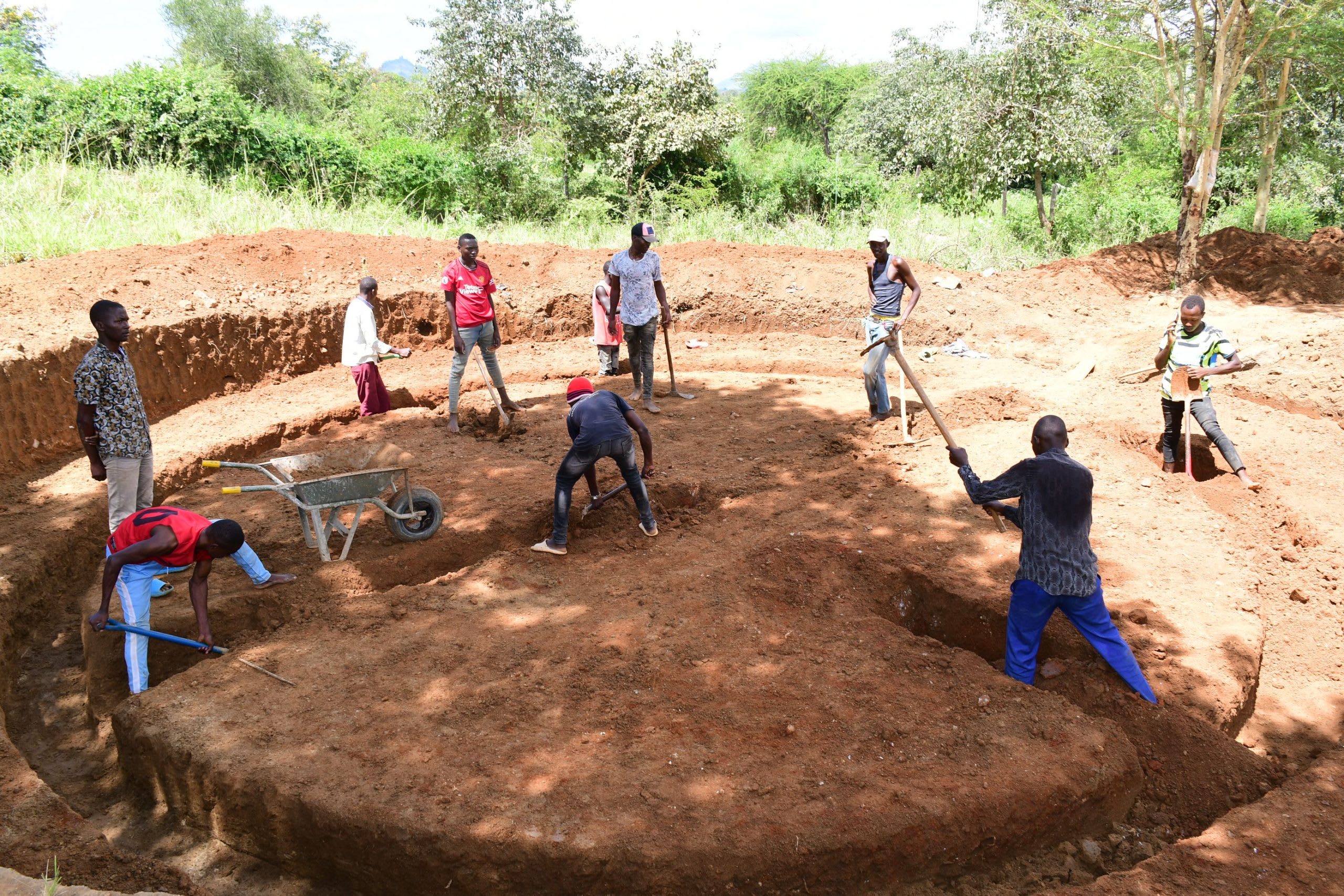The 455 students and staff of Kyamboo Secondary School, a public boarding school in rural Kitui County, Kenya, suffer from an extreme water shortage.
"Due to the semi-arid climate in Kitui county, the school suffers from acute water scarcity," said field officer Jefferson Mutie.
"The school has several water tanks, which are not enough to sustain the whole school during the several months of drought, especially because this is a boarding school," said Jefferson.

When the limited rain tanks on the school campus run dry, the school is forced to buy water from delivery trucks or purchase access to the unreliable, rationed municipal water supply. Both options are expenses the school administration can not afford to pay since most of the student's parents are farmers, and the lack of rain also impacts their ability to pay school fees.
"It is very frustrating to run operations in this school because water is essential in the pursuit of a better learning environment for the students. The immense water expenses mean I have to send some students home to collect school fees from their parents. These students miss out a lot on school work, forcing them to perform dismally on their academics. We also pay about 250,000 Kenyan Shillings (nearly $1700) annually on water, which [could have] been expended on other important activities if we had a bigger rainwater tank. The students and teachers also [have] to bear with the unclean classrooms and latrines in the school because water is mostly used for drinking and cooking," shared teacher John Miles (seen below).

When there is limited water or water delivery is delayed, there is a ripple effect throughout the school, causing meals to be delayed and students to resume classes still hungry and thirsty, which affects their concentration. The quality of the purchased water also can not be trusted. The school does its best to treat the water by purchasing disinfectant tablets, but limited funds quickly run out, leaving students vulnerable to contracting waterborne ailments like amoeba, typhoid, and dysentery.
"Returning to class without water to drink after lunch, like today, is demotivating and frustrating. I find it very difficult to concentrate in class because I am distracted by thirst, and this has culminated in poor grades. I also have to resume class with my dirty plate and cup because there is no water in school. I have had to lick my plate clean or wipe it using papers which cause contamination," said 17-year-old Simon M.

"We have to bear with the conditions because we strive for a better future through learning. I hope that one day we will have enough water in our school so that I can always drink clean water, wash my utensils, and improve my personal hygiene," said Simon (seen above).
Little water also means it has to be used sparingly, which negatively affects the cleanliness of classrooms and latrines and finding water to establish agricultural projects is nearly impossible.
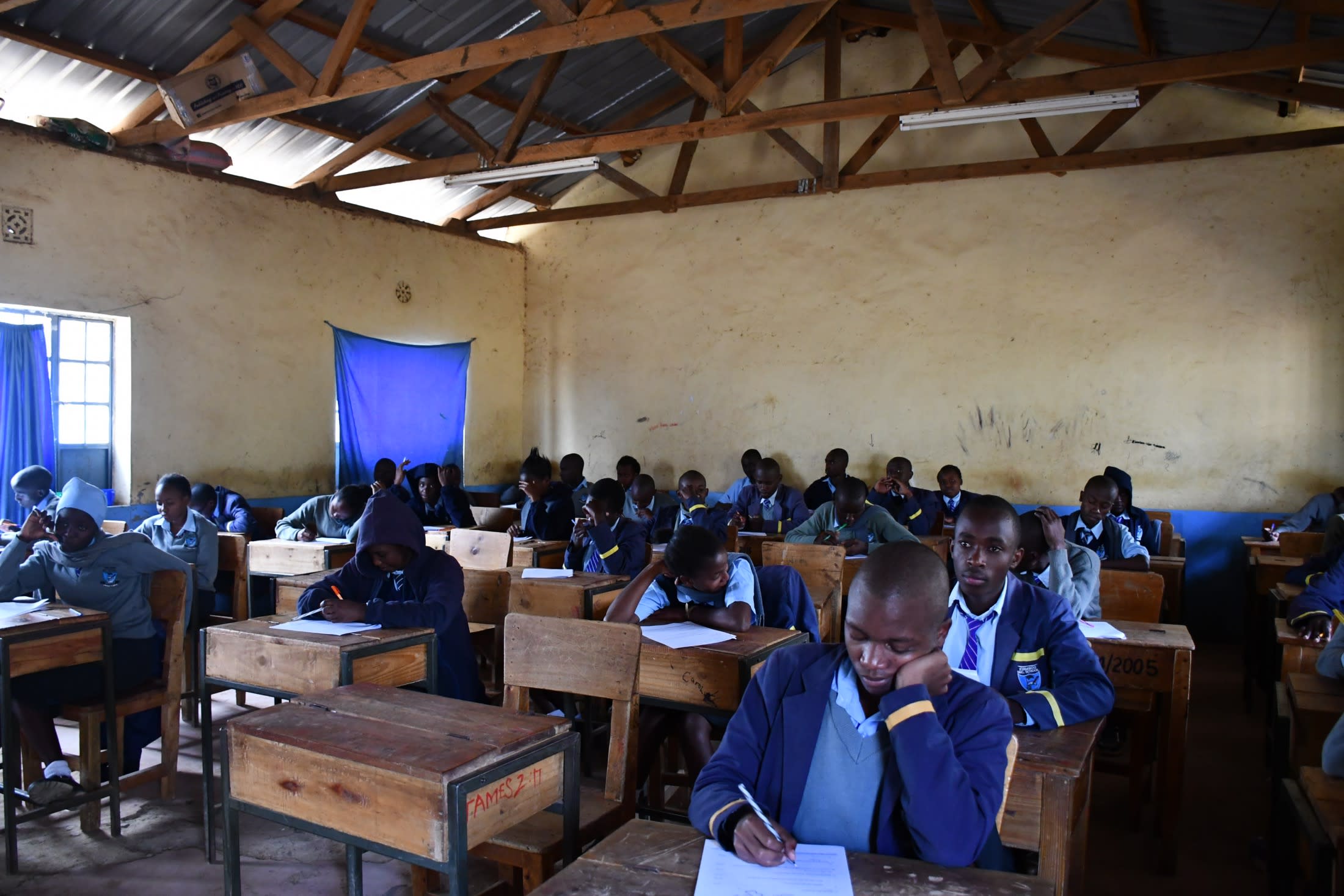
Installing a 104,000-liter rain harvesting tank will ensure the school can collect and store sufficient clean water so it is always available. Hopefully, this will allow students like Simon and teachers like John to focus on learning instead of wasting their time and resources worrying about water.
The school can use its resources to strengthen academic programs and infrastructure. Students will have their meals prepared on time, sanitation and hygiene should improve, and clean drinking water will ensure no one is thirsty or exposed to water-related infections.
"The tank would also have a positive impact on student enrollment and retention since parents would love their children to learn in a comfortable environment with enough clean water," concluded Jefferson.
Water at schools is unique, which is why we need unique solutions.
The Proposed Solution, Determined Together...
At The Water Project, everyone has a part in conversations and solutions. We operate in transparency, believing it benefits everyone. We expect reliability from one another as well as our water solutions. Everyone involved makes this possible through hard work and dedication.
In a joint discovery process, community members determine their most advantageous water solution alongside our technical experts. Read more specifics about this solution on the What We're Building tab of this project page. Then, community members lend their support by collecting needed construction materials (sometimes for months ahead of time!), providing labor alongside our artisans, sheltering and feeding the builders, and supplying additional resources.
Water Access for Everyone
This water project is one piece in a large puzzle. In Kenya, Sierra Leone, and Uganda, we're working toward complete coverage of reliable, maintained water sources that guarantee public access now and in the future within a 30-minute round trip for each community, household, school, and health center. One day, we hope to report that this has been achieved!
Training on Health, Hygiene & More
With the community's input, we've identified topics where training will increase positive health outcomes at personal, household, and community levels. We'll coordinate with them to find the best training date. Some examples of what we train communities on are:
- Improved hygiene, health, and sanitation habits
- Safe water handling, storage & treatment
- Disease prevention and proper handwashing
- Income-generation
- Community leadership, governance, & election of a water committee
- Operation and maintenance of the water point
Handwashing Stations
Alongside each water source in Southeast Kenya schools, we also provide three new handwashing stations fitted with three taps each, allowing nine students to wash their hands at once. These will allow everyone at the school to wash their hands without running water. Handwashing is so important to help prevent future water-related illnesses in the school community.
The student health club will maintain the stations, fill them with water, and supply them with soap (which we will teach the school community how to make during the training!).

 Rainwater Catchment
Rainwater Catchment
 Rehabilitation Project
Rehabilitation Project











